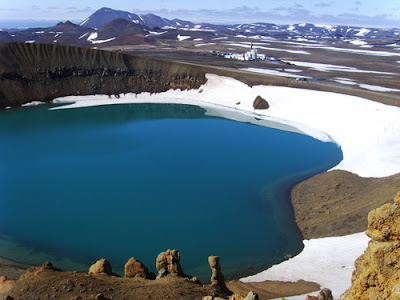Although Seattle is an amazing place to live, I'm sad that my trip is over! Magnificent Everest, luxurious Saint Vincent, lovely New Zealand and spectacular Iceland truly gave me a great preview into our plate tectonics unit next year.
Of course, I highly recommend visiting Seattle because of it's interesting tectonic activity but it's also just a beautiful place to go. The Great Wheel and the Space Needle both offer exclusive views of downtown, Mount Rainier and surrounding landscape. Seattle is also located on a subduction boundary similar to Saint Vincent because there are two plates and one is subducting beneath the other. But differently than Saint Vincent which had two oceanic plates, this is a continental plate and an oceanic plate. The denser oceanic plate subducts beneath the less dense continental plate. Rather than an arc of volcanic islands, a mountain chain and volcanoes form.
In Seattle, the North American plate and the Juan De Fuca plate are along the subduction boundary. The Cascade Mountain Range containing Mount St. Helens and Mount Rainier is formed from this subduction. St. Helens' recent eruption in 1980 (also the most recent eruption in the United States) caused 57 casualties and covered 11 states in ash.
The earthquake activity in Seattle is quite major and as a matter of fact, we are overdue for a big earthquake right now! The most recent earthquake was in 2001 and had a magnitude of 6.1, which can be pretty damaging in an urban area. There were many injuries but because of our knowledge of earthquakes, hopefully we'll be safe for the next one!
To all you bloggers who have stuck with me throughout my entire fabulous journey: thank you! Also, if you are ever headed to Seattle and need some advice about what to do or just want to have a little snack with an old friend (me!), give me a holler at (206) 555-5555.
I'll be sure to blog on my next adventure now that I know how fun it really is!
-Kath ; )
 |
| http://www.frankfurnessresources.com/rickimages/Cascade-Mountains.jpg |
 |
| http://www.globeimages.net/data/media/5/seattle_skyline.jpg |
 |
| http://pubs.usgs.gov/fs/2000/fs060-00/images/subduction.jpg |











